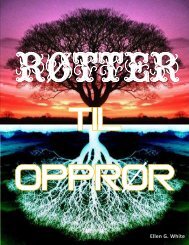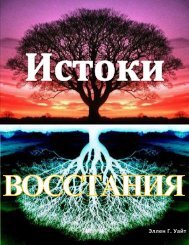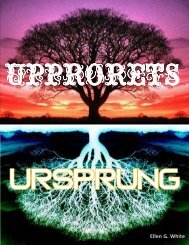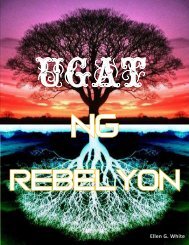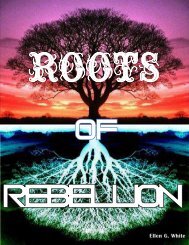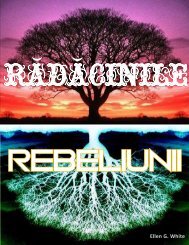Foxe - The Book of Martyrs
The mystery of history is not completely dark, since it is a veil which only partially conceals the creative activity and spiritual forces and the operation of spiritual laws. It is commonplace to say that the blood of the martyrs is the seed of the Church yet what we are asserting is simply that individual acts of spiritual decision bear social fruit …For the great cultural changes and historic revolutions that decide the fate of nations or the character of an age is the cumulative result of a number of spiritual decisions … the faith and insight, or the refusal and blindness, of individuals. No one can put his finger on the ultimate spiritual act that tilts the balance, and makes the external order of society assume a new form… Persecution, powerless to destroy or even to shake this new community, made it only the more sensible of its own strength, and pressed it into a more compact body.
The mystery of history is not completely dark, since it is a veil which only partially conceals the creative activity and spiritual forces and the operation of spiritual laws. It is commonplace to say that the blood of the martyrs is the seed of the Church yet what we are asserting is simply that individual acts of spiritual decision bear social fruit …For the great cultural changes and historic revolutions that decide the fate of nations or the character of an age is the cumulative result of a number of spiritual decisions … the faith and insight, or the refusal and blindness, of individuals. No one can put his finger on the ultimate spiritual act that tilts the balance, and makes the external order of society assume a new form… Persecution, powerless to destroy or even to shake this new community, made it only the more sensible of its own strength, and pressed it into a more compact body.
Create successful ePaper yourself
Turn your PDF publications into a flip-book with our unique Google optimized e-Paper software.
<strong>Foxe</strong>’s <strong>Book</strong> <strong>of</strong> <strong>Martyrs</strong><br />
P. I say, what He gave them, that did they eat indeed.<br />
Dr. H. Well, then, thou sayest it was but bread which the disciples did eat.<br />
P. I say, what He gave them, that did they eat indeed.<br />
A very long disputation followed, in which Plaise was desired to humble himself to the<br />
bishop; but this he refused. Whether this zealous person died in prison, was executed, or<br />
delivered, history does not mention.<br />
Rev. John Hullier<br />
Rev. John Hullier was brought up at Eton College, and in process <strong>of</strong> time became curate<br />
<strong>of</strong> Babram, three miles from Cambridge, and went afterward to Lynn; where, opposing the<br />
superstition <strong>of</strong> the papists, he was carried before Dr. Thirlby, bishop <strong>of</strong> Ely, and sent to<br />
Cambridge castle: here he lay for a time, and was then sent to Tolbooth prison, where, after<br />
three months, he was brought to St. Mary's Church, and condemned by Dr. Fuller. On<br />
Maunday Thursday he was brought to the stake: while undressing, he told the people to bear<br />
witness that he was about to suffer in a just cause, and exhorted them to believe that there was<br />
no other rock than Jesus Christ to build upon. A priest named Boyes, then desired the mayor<br />
to silence him. After praying, he went meekly to the stake, and being bound with a chain, and<br />
placed in a pitch barrel, fire was applied to the reeds and wood; but the wind drove the fire<br />
directly to his back, which caused him under the severe agony to pray the more fervently. His<br />
friends directed the executioner to fire the pile to windward <strong>of</strong> his face, which was<br />
immediately done.<br />
A quantity <strong>of</strong> books were now thrown into the fire, one <strong>of</strong> which (the Communion<br />
Service) he caught, opened it, and joyfully continued to read it, until the fire and smoke<br />
deprived him <strong>of</strong> sight; then even, in earnest prayer, he pressed the book to his heart, thanking<br />
God for bestowing on him in his last moments this precious gift.<br />
<strong>The</strong> day being hot, the fire burnt fiercely; and at a time when the spectators supposed he<br />
was no more, he suddenly exclaimed, "Lord Jesus, receive my spirit," and meekly resigned<br />
his life. He was burnt on Jesus Green, not far from Jesus College. He had gunpowder given<br />
him, but he was dead before it became ignited. This pious sufferer afforded a singular<br />
spectacle; for his flesh was so burnt from the bones, which continued erect, that he presented<br />
the idea <strong>of</strong> a skeleton figure chained to the stake. His remains were eagerly seized by the<br />
multitude, and venerated by all who admired his piety or detested inhuman bigotry.<br />
Simon Miller and Elizabeth Cooper<br />
In the following month <strong>of</strong> July, received the crown <strong>of</strong> martyrdom. Miller dwelt at Lynn,<br />
and came to Norwich, where, planting himself at the door <strong>of</strong> one <strong>of</strong> the churches, as the people<br />
came out, he requested to know <strong>of</strong> them where he could go to receive the Communion. For<br />
this a priest brought him before Dr. Dunning, who committed him to ward; but he was suffered<br />
to go home, and arrange his affairs; after which he returned to the bishop's house, and to his<br />
237




